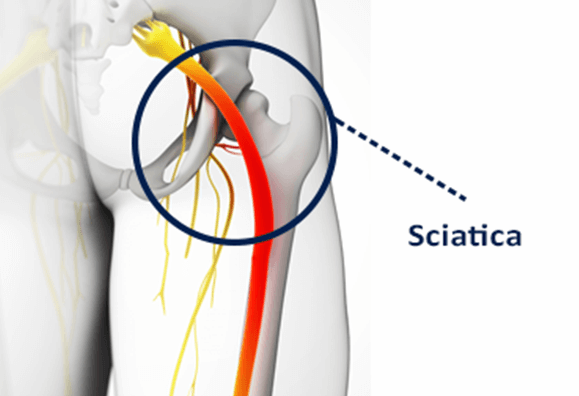This article is excerpted from Harvard Medical School’s HealthBeat publication.
Sciatica is one of the most common, yet misunderstood, types of pain. As many as 40% of people will get it during their life, and it becomes more frequent as you age. Sciatica tends to get lumped in with regular back pain, but it is different. The pain originates with the sciatic nerves and often goes away by itself within a few hours or days. However, some attacks can come and go for several weeks or even months. Fortunately, there’s a lot you can do to prevent sciatica, as well as relieve the pain.
Increase exercise
Exercise is a key way to prevent or help relieve sciatica. Consider these types:
- Aerobic exercise: walking, jogging, swimming, and cycling candancing, and other activities that increase your heart rate without causing more pain if you already have sciatica.
- Strength training: exercises using free weights or weight machines, or isometric exercises, which involve contracting muscles without obvious movement.
- Flexibility training: yoga, tai chi, Pilates, and similar activities that increase both flexibility and strength.
Really, any exercise that you can enjoy and do regularly is going to help. So try something new, go back to an old favorite, or both.
Strengthen your core
It might not seem obvious that a stronger core could improve your spinal health. But your core is not just your abdominal muscles, even though they are key contributors to the stability of your spine. Muscles in the back, sides, pelvis,and buttocks also are part of your core. Strengthening all of these muscles helps to support your spine.
Many types of exercise, including yoga and Pilates, can strengthen the core muscles. For example, planks and bridges are movements that target the core.
Avoid sitting for long periods
Prolonged periods of sitting put pressure on the discs and ligaments in the low back. If you have a job that requires a lot of sitting, take frequent breaks, or try a standing desk. Less sitting is better.
Manage your weight
Being overweight or obese can increase your risk for sciatica. And people who have sciatica and are overweight tend to heal more slowly. Why? The increased weight puts pressure on your spine and can lead to herniated discs. Even minor weight loss will reduce inflammation and pressure on the spine.
Practice good posture
Mom was right—slouching isn’t good for you. But you don’t have to walk around the room with a book on your head to practice good posture. Follow these tips:
- Pay attention to your body’s position when you’re standing or sitting.
- To prevent slouching, pull your shoulders down and back. Imagine your shoulder blades touching.
- If you work at a computer, take frequent breaks. Position your monitor so you can see it without bending your head down or tilting it back.
To read more from Harvard on coping with sciatica, please click here: https://www.health.harvard.edu/promotions/harvard-health-publications/finding-relief-for-sciatica.
If you’ve tried these techniques and are still suffering from sciatica, the Bonati Spine Institute can help. By utilizing the outpatient Bonati Spine Procedures, with techniques developed and patented by Dr. Bonati, patients have received amazing results and report a 98.75% patient satisfaction rating. To discuss your case with our team, simply click here or call us at 855-267-0482.

